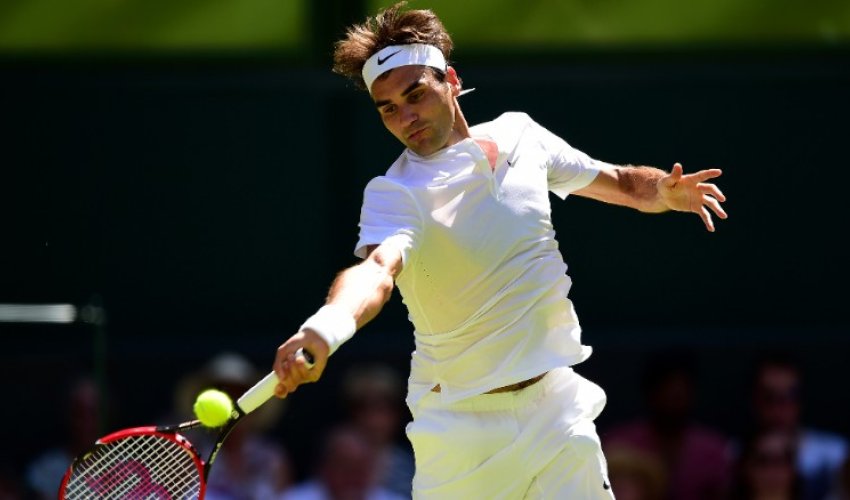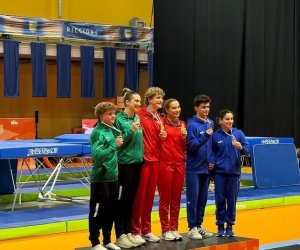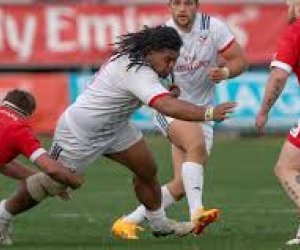Roger Federer, Rafael Nadal not fazed by heatwave

After hearing the weather forecast for the next several days in London -- the continuation of a heatwave in a country not known for extended, sapping warmth -- the elderly cab driver quipped, "At least it's better than rain."
Many tennis fans would agree with the man, who'd been around for quite a few Wimbledon fortnights when the combination of rain and no roof meant delays and scheduling headaches for organizers.
Tuesday's temperatures reached just above 30 degrees Celsius (86 Fahrenheit), and Wednesday is supposed to get even hotter. The UK's national weather forecaster predicted it was likely to soar to 33C (91F).
That wouldn't be too far off from the tennis tournament's record temperature of 34.6C (94F) -- recorded by the Met Office on June 26, 1976.
The women players at Wimbledon can take advantage of a heat rule, which calls for a break of 10 minutes between the second and third sets when the "heat stress index" -- a combination of elements -- reaches 30.1C (86F).
The women's tour also has a heat rule, but the men don't -- at Wimbledon or on their ATP Tour, although at the Australian Open the extreme heat policy covers both genders.
The heat rule wasn't implemented Tuesday, the referees' office said, but it didn't stop players from both singles draws being asked about the issue.
So, should the men benefit from some sort of pause, too?
Had the two leading lights in the men's game, Roger Federer and Rafael Nadal, said yes and kicked up a fuss, the game's decision-makers surely would have taken notice.
But Federer and Nadal -- who advanced to the second round after comfortable straight-set wins Tuesday -- stopped well short of taking such a stance, claiming the conditions weren't problematic.
"In Australia we've had some moments," said Federer, who beat Bosnian Damir Dzumhur for the second instance in a month, this time 6-1 6-3 6-3 to set up a clash with American Sam Querrey.
"That's why the Australian Open has almost done the rule -- I want to say more for the fans, I feel like almost, and the officials and the ball boys and the linesmen and spectators rather than us," the record seven-time champion added. "We can play through these kind of conditions because we're used to it.
"For us, it's just an hour, two, three, four max, I'd say. Today was perfect conditions."
Nadal, meanwhile, claimed the heat of Rio de Janeiro or Australia was harder to deal with.
"It's difficult to think about a better day to play tennis here in Wimbledon," said the Spaniard, a 6-4 6-2 6-4 winner over Brazil's Thomaz Bellucci.
And besides, the sunny and dry conditions give him more traction on the grass, added the 14-time grand slam champion.
"For the injuries, it is much better to play with these conditions than when the weather is cloudy and there is more humidity out there," he said. "The grass is more slippery than what it is today. Happy for that."
Nadal will next play German Dustin Brown, who beat him on grass last year at Halle ahead of Wimbledon.
Even 13th seed Jo-Wilfried Tsonga, who defeated Gilles Muller in five sets 7-6 (10-8) 6-7 (3-7), 6-4 3-6 6-2, was not concerned by the conditions.
"The weather was good to play tennis," the Frenchman said. "Was not too humid.
"In Australia anyway we play until, I don't know what, 42 degrees on court. We will see if it's going to be 42. But for the moment, it's not 42. We can play tennis."
Andy Murray, the 2013 champion, probably got a bit hot under the collar thanks to his free-swinging Kazakhstani opponent Mikhail Kukushkin.
The 59th-ranked Kukushkin led by a break at 6-5 in the second set and 30-0 yet dropped the game and set and fell 6-4 7-6 (7-3) 6-4. With Liam Broady, James Ward and Aljaz Bedene also winning in the opening two days, it gave Britain four men in the second round at SW19 for the first time since 2006.
Reigning women's champion Petra Kvitova, whose asthma can get worse in intense heat, made sure not to linger as she opened play on Center Court.
The Czech second seed crushed Dutchwoman Kiki Bertens 6-1 6-0 in 35 minutes, losing only one point behind her serve -- on a double fault.
But the woman she defeated in last year's final, Eugenie Bouchard, slumped to a first-round 7-6 (7-3) 6-4 exit to Chinese qualifier Ying-Ying Duan to add to her woes. From reaching the Australian Open and French Open semis and the Wimbledon final last year, this year the Canadian has compiled a 4-13 record since making the Melbourne quarterfinals in January.
The 21-year-old said she had been struggling with a torn ab muscle, which forced her to retire from a match at a warmup event in Eastbourne this month.
"It probably wouldn't have been smart to play here, but I couldn't pass on Wimbledon," she said. "So I did kind of minimal preparation to save myself for the match."
There was another upset soon after when third-ranked Simona Halep, ousted by Bouchard in last year's semis at Wimbledon, lost 5-7 6-4 6-3 to unheralded Slovak Jana Cepelova.
Like Bouchard, the Romanian is now firmly in a slump, having exited to the unseeded Mirjana Lucic-Baroni in the second round at the French Open after making the Roland Garros final in 2014.
"I wasn't there" emotionally, Halep said. "I'm confident in my game. But emotional and, like, inside power, it's not there 100%."
For 106th-ranked Cepelova -- best known for beating Serena Williams on clay at Charleston last year -- the reward was a matchup with another Romanian, No. 48 Monica Niculescu, who reached the final at the warmup event in Nottingham in early June.
(CNN)
www.ann.az
Similar news
Similar news




































 Photo
Photo 



 Video
Video 

